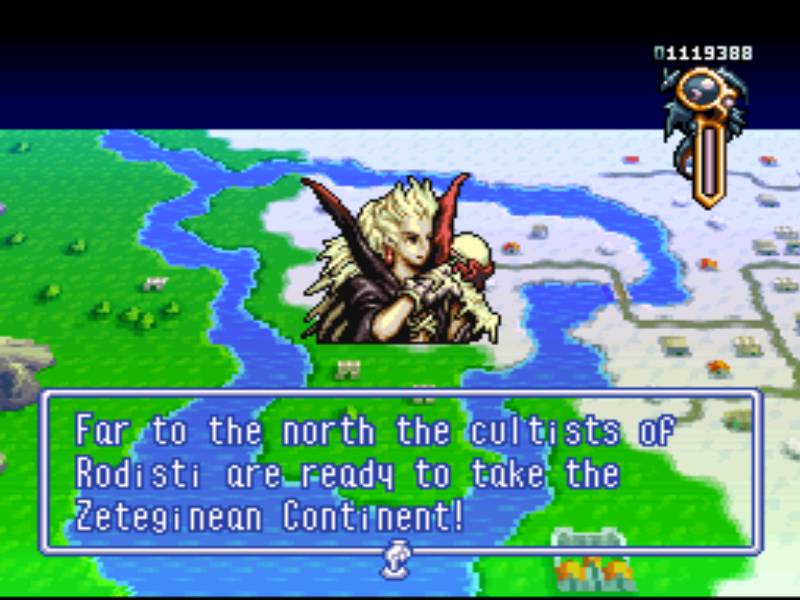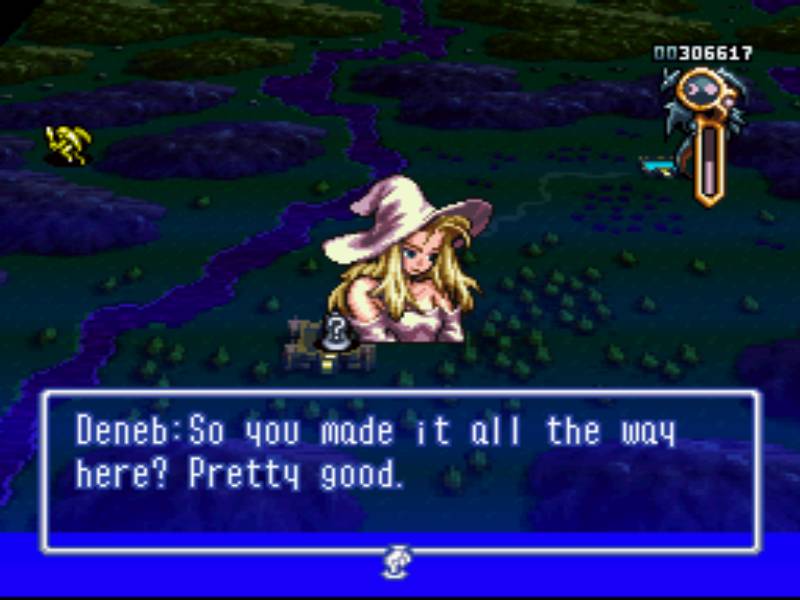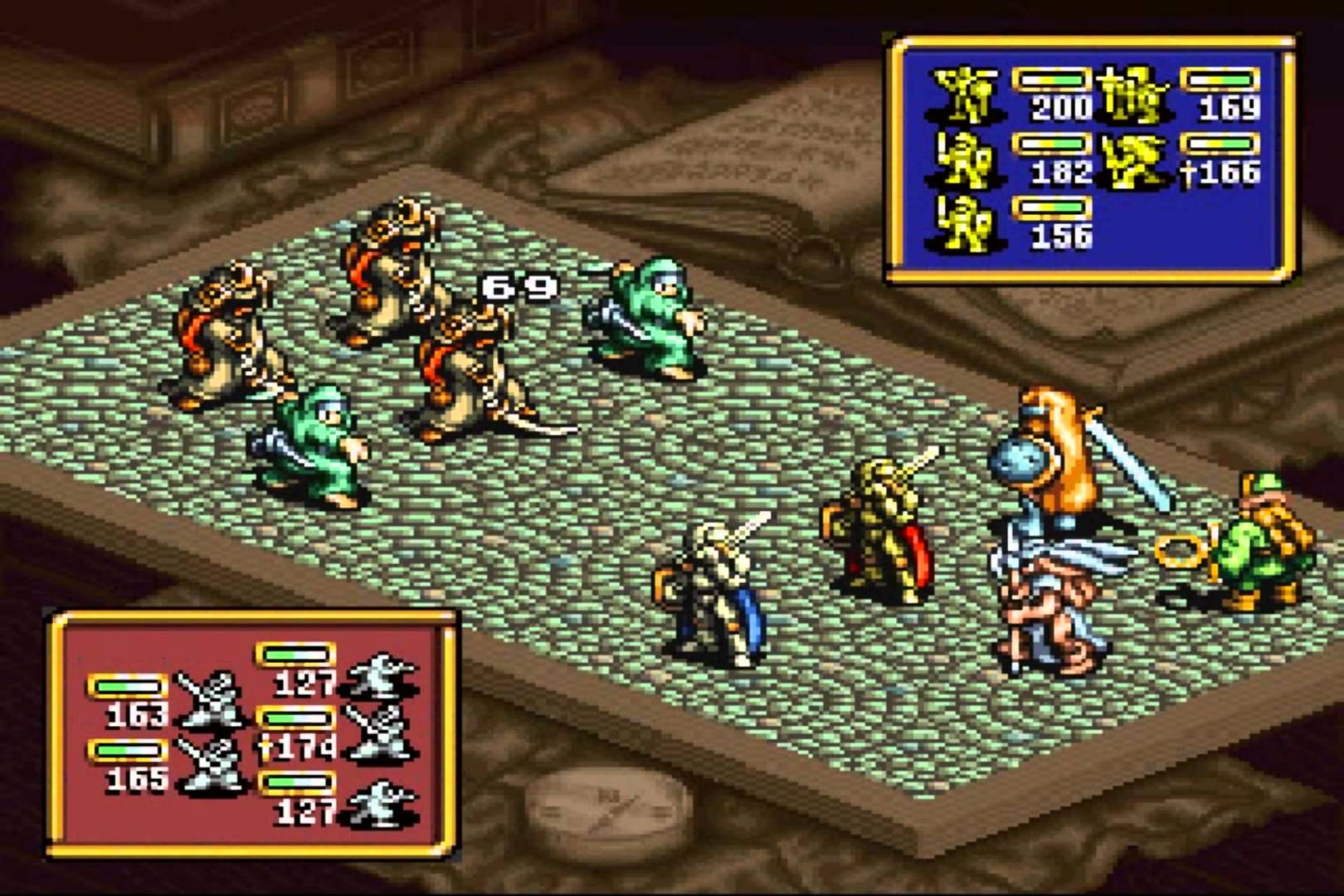Final Fantasy Awakening, the game produced in the Final Fantasy Type-0 worldview has officially launched today on iOS. Already out for the past two weeks on Android has already surpassed 137,000 downloads. Authorized officially by Square Enix, was produced featuring high-quality work of many talented Japanese voice actors. Based in the world established by Final Fantasy Type-0, it features the games 14 classic characters, as well as many well-known story elements, such as Eidolon, Moogles, Magitek Armor, and much more. Interested iOS owners can acquire it right here.
Monthly Archives: February 2018
Retro Review: Ogre Battle: March of the Black Queen (SNES/PSX)
by Jason Parker (Ragachak)
Ogre Battle: March of the Black Queen was really a diamond in the rough, a real strange title. It was strange in that it instead of being a SNES/Sega Genesis title, it was a SNES/Playstation title! I cannot, off the top of my head, think of any other game that fit this qualification other than Romance of the Three Kingdoms IV: Wall of Fire. It was certainly a rare occurrence, at any rate. They’re the exact same game, but one is on a cartridge and one is on a disc. Are there any major differences? Before I talk about the game, there is something to be aware of, for those of you who collect retro cartridges/discs. The SNES game is identical in every way, except some of the aesthetics. In the Playstation version, unique characters keep their unique aesthetics/color palettes when they upgrade their classes, but they do not on the Super Nintendo version. If that really matters that much to you (and it can make finding characters a little easier in your menus, I’ll grant) then get the PSX version. The SNES version shines in that while its graphics aren’t quite as sharp or clean, it has no horrific load times and it won’t ever scratch!
That’s a big difference for me. The 3D look of the battlefield is very nice on the Playstation version, and that’s the one I actually played first, thanks to a good friend who owned it. Now that we have that out of the way, what is Ogre Battle? Ogre Battle is a part of a series of RTS/RPG games, known in some circles as the Ogre Battle Saga. There are Ogre Battle games, which combine turn-based action with real-time strategy, and the turn-based strategy RPGs, the Tactics Ogre series. Today we’re going to focus on the first Ogre Battle, March of the Black Queen. The sequel was Tactics Ogre: Let Us Cling Together, though I did not see this until it came to the PSP. Fun fact, Ogre Battle was also available on the Sega Saturn! Curious that it did not appear on the Genesis. Maybe “Genesis does what Nintendon’t” isn’t so accurate after all, huh? Stay mad, Sega nerds.
Ogre Battle is based around the Tarot card system, and all of the Major Arcana (The Tower, The Fool, The Lovers, The Hanged Man, The Chariot, Strength, et cetera) play a role in the game. The story is a fairly standard medieval fantasy, built around a group of rebels trying to overthrow a corrupt Empire, and their struggles and woes. You’ll liberate towns, do battle with evil forces, and perhaps become a greater evil yourself. As it starts, you answer a series of questions based on these cards, and that will factor into what kind of character the main one is. You can come out with several options, and there are multiple FAQs online to help guide you to the character archetype you want if you want to cheese the system. Or you can answer in whatever moral fashion you see fit, and let God take the wheel. These cards also appear in the game as items you can use, to deal damage, help your units and so many other things, collecting them is not “important” so much as it is “useful”. This also plays into your Reputation, whether you’re good or evil. Certain units can be recruited this way, and some cannot. Liberating towns (determined by your parties average Reputation and class makeup) can increase Reputation, though Roshian Temples and Hidden Towns (maps you cannot see on the map) have no effect on this. Certain cards also raise your Reputation when drawing them after liberating a town. This can be lowered by dialogue choices, and drawing particular cards after liberating a town.
Fun fact: If you idle on the map too long, to farm Tribute and gain money, it will also lower your reputation. Reputation factors into your endings as well, being one of the first games on a console with multiple endings, some of which are terribly awful (such as the Demon possession ending). The gameplay is pretty simple, while also being infuriatingly complex. You move sets of units (set into squads) around a map, to complete particular objectives. You liberate shrines, towns, and recruit units and unique NPCs to your cause. As they grow in power, they can advance down trees, acquiring new forms and new abilities. Here’s where it gets complicated though. Each unit, monster or human, has a front row and a back row power. Depending on the party makeup, you can have a certain amount in the front/back, depending largely on the size of the unit I believe. This even extends to the main character, who has X power in the front and Y power in the back. So you have to figure out which teams work best together, and if it’s worth it to have 2 attacks from this place or just 1 from that spot on the team. Actual combat might look confusing as there really isn’t much information on the screen. It’s very much a learn-by-doing style.
Combat’s simple though in that regard. They auto-attack, using whatever power they would have for that spot on the team, and the initiative system takes care of who should attack when. You can use your Tarot cards in battle to interrupt the flow of gameplay and swing things back into your control, but you have no other ability to control what is done in power. Liberating these towns gives you tribute, as I said earlier, and that means more money! Money is great. Though movement on the map is very slow, (though some aquatic units felt faster on the water, and flying units overall felt faster). Enemies can take back towns from you, and can/will be aggressive when the time is right. Everything you do matters in Ogre Battle, from the decisions you make to the cards you draw and whether you re-take a town or not. There are hidden, powerful units you can acquire (such as the witch Deneb, and the Demon Galf), and recruiting some of these can also change your ending. A fine example is recruiting Galf will give you the Devil Ending, but to recruit him you must have certain specifications, like a completely empty Reputation meter. There are 13 endings, each named after one of the Major Arcana in the Tarot deck. This came out a full two years before Chrono Trigger, which also had tons of hidden endings.
LIBERATION! 5/5
Ogre Battle is a true classic and one that most people when I was growing up had never heard of. The N64 Sequel was (in my opinion) absolutely awful, and if that was your first exposure to the franchise, you really would potentially miss out on something great. Though the SNES cartridge is frightfully expensive in some circles, it also saw a Virtual Console release on the Wii, and had a Playstation release which appears to have a cheaper cost overall. If you’re looking for an early/potentially unknown strategy game, you could not do better than Ogre Battle. It has tons of stuff to learn and unlock, absolute hordes of replay value from the endings to simply making your main character, and different team compositions/squad builds. Each time you play this it will be different. The game had wonderful music, a really stand-out sprite style, and was a tactical RPG in a time when they were neither popular nor plentiful in the US. The fact that you did not have to worry about actual combat was kind of nice, only preparing for it in advance (and using Tarot cards when needed) was certainly a fresh idea.
Subscribe and Punch
Subscribe and Punch is a 2D multiplayer fighting game packing their roster with Youtube gaming celebrities. Find out once and for all which Let’s Play’ing star would win in a bare knuckled brawl! Available for Windows.
Features:
Hey What’s Going On Guys?: Choose from one of the several personalities including Pewdiepie and Markiplier.
Vibrant as the Cast: The gorgeous animations and coloring work is a delight for the eyes.
Round 1 of Many: Enjoy a suite of gameplay options including a dialogue packed story mode, tutorials, versus, ranked, casual, replays, training, arcade, team battle, and a wacky physics arena.
Pantropy
Pantropy is a sci-fi themed survival MMOFPS taking place on a jungle crossed with technology hybrid island. Work solo or with a team to venture farther and farther towards the center of the isle finding progressively more valuable materials required to create a base and autonomous warriors. Available for Windows.
Features:
Stabbed Off the Island: Team up with other players to survive, or, backstab those closest to you for material gain.
Architectural Alliance: Customize and decorate your home base to function as a safe place, material storage, or tactical outpost.
Hiker: Scavenge for weapons, armor, materials, and vehicles across multiple diverse biomes.
Mars Battle
Mars Battle is a F2P sci-fi kingdom management sim located on our little neighboring red planet of Mars. Build up a base and allocate resources as necessary to fund endless military conquest. Available for Windows.
Features:
Building Blocks: Mine and spend resources like steel or concrete.
Next Level Weaponry: Construct all manner of terrifying near-future units such as autonomous mechs or sky screeching jets.
Galactic Diplomat: Form or burn down alliances with other players as you see fit.
Argo
Argo is a F2P realistic military first-person shooter featuring robust multiplayer, co-op, and user-created content. Call up the whole squad, join a faction, and fight for control of a environmentally diverse island. Available for Windows.
Features:
Dreamwork: Work with your team over voice comms to stay informed of the mission at hand.
Anyway You Need It: Take the FPS tactics action to several game modes including fighting for territory, capturing points, raiding and defending terminals, surviving against AI, or playing user generated missions.
Career Military: Progress through the ranks and gain prestige along with new weaponry, equipment, and attachments for your guns.
Subscribe and Punch Trailer
Pit your favorite Youtube celebrities against each other in this beautiful 2D multiplayer fighting game!
Pantropy Trailer
Join or Die. A good saying to live by both in the past and in the future.
Mars Battle Trailer
Juggle economies and resources as your lead a mighty military force to conquering advanced civilizations on Mars.
Argo Trailer
Get tough-as-nails FPS action packed with multiplayer, co-op, and even a mission builder – all for free.







